What does a bowl of bún bò Huế (Vietnamese spicy beef noodle soup) have? If your answer is “beef” and “noodle”, you’re far off the mark. For those including Vietnamese spices and herbs in their response, that’s a little closer to the truth. But this recipe is more complicated than that.
Making authentic Vietnamese spicy beef noodle soup is a little more challenging than other noodle dishes from this Southeast Asian country in terms of finding the ingredients. But read on, and I promise that the stimulating kick you get out of it is totally worth your time.
What Is Special About Bún Bò Huế?
There are several beef-based dishes in Vietnam, like Phở or Bò Kho. But have you ever tried a dish called bún bò Huế?
The Vietnamese name of this dish literally means “beef noodle soup from Huế”. As you can guess, this delicacy stems from Huế, the capital of Thừa Thiên-Huế province in central Vietnam. The city was once the seat of the country’s imperial court and the pinnacle of royal cuisine.
Legend has it that the noodle soup was created around the 16th century by a woman who followed the first Nguyễn Lord to settle down in the then-new land. The Nguyễn Lords would go on to be a long line of powerful rulers, while Bún Bò Huế would become popular all over Vietnam.
Another name of the dish is Vietnamese spicy beef and pork noodle soup. That is because it usually includes a variety of Vietnamese pork-based foods (and pig blood curds!). Other ingredients that characterize the classic flavor of this dish are lemongrass and shrimp paste.
Do you know what makes this dish spicy (as its name suggests)? That heat (and the vibrant red color) comes from the accompanying sate sauce (sa tế – Vietnamese lemongrass chili sauce). This noodle soup usually goes with a lot of greens and vegetables, creating a nice balance in flavor.
Which Kitchen Tools Are Essential for Preparing Bún Bò Huế?
This spicy beef noodle soup only requires a few tools that most modern kitchens already have, so there is nothing fancy about this part.
Which Ingredients Make the Best Bún Bò Huế?
Born in one of the cradles of Vietnam’s fine cuisine, bún bò huế requires some ingredients that you may have difficulties purchasing outside the country. But you can find them online or buy them from large supermarkets/ gourmet stores.
What Are the Detailed Instructions for Bún Bò Huế?
Here is all about the 5 main steps you have to do to prepare bún bò Huế:
Step 1: Prepare the Ingredients
Wash the vegetables and let them drain. Put the following ingredients on the baking tray:
Bake in the oven for 15 minutes.
Parboil the meats in a stock pot to clean it. Heat water with salt, ginger, and scallion.
Then add:
Cook for 3 – 5 minutes with the lid off. Skim off the impurities that float to the top. After that, get the meats out with a slotted spoon and keep them somewhere cold (with ice or in the fridge) to prevent browning.
Finely chop 1 lemongrass stalk (you may want to tenderize it with the meat mallet first), 2 shallots, and 4 garlic cloves. Set them aside to make the sate sauce later.
Then crush the baked ginger with a meat mallet.
Step 2: Cook The Meats
Add these ingredients to the pressure cooker:
Set the pressure cooker on stew mode and cook for 20 – 30 minutes.
Fill a stock pot with 3.7 quarts of water and add the following ingredients:
Cook on medium heat for 1 hour 30 minutes to 2 hours. Keep the lid off. Occasionally skim off the foam to keep the broth clear.
Step 3: Prepare the Sauces
In a saucepan, cook 3 tablespoons of shrimp paste and 2 teaspoons of brown sugar in hot water (a small cup of water is enough). Stir well. When the mixture bubbles, turn off the heat and let it cool.
Place a skillet on the stovetop and heat it with olive oil. Sautee the ingredients for the sate sauce (chopped lemongrass, shallots, and garlic) along with chili powder and cashew oil.
Stir constantly until the sauce releases a fragrant smell, then take the skillet off. Don’t overcook, or the sauce will get burned.
Step 4: Prepare the Noodle Soup
Get the beef brisket, pork knuckles, and other ingredients out of the pots. Set the meats aside to cool down and drain.
Prepare the broth by pouring the beef stew water, the liquid part of the shrimp paste mixture, and the sate sauce into the pot with pork knuckle stew water. Give it a gentle stir. You can keep a portion of the sate sauce to serve with the finished dish.
Cut the beef, cinnamon pork pate, and pork sausage into thin slices. Finely chop onions, scallion, coriander, laksa leaves, and fresh chiles.
Dice the pig blood jelly into bite-sized cubes.
Send the pig blood jelly cubes and beef meatballs into the broth and cook over medium heat for 5 minutes.
Add brown salt and brown sugar to taste.
Parboil the noodles in hot water mixed with a little cooking oil (to keep their strands separate) for the best experience.
Step 5: Decorate and Serve
Put some noodles in your bowl, followed by slices of cinnamon pork pate, pork sausage, beef, and a pork knuckle on top. Gently pour the broth into your bowl, along with the pig blood jelly cubes and beef meatballs.
Garnish with the chopped aromatic herbs you saved earlier. Serve with fresh greens and sate sauce.
How to Store Bún Bò Huế for Later Use?
If you want to make Vietnamese spicy beef noodle soup ahead, it is best to store the components (noodles, meat, broth, and sate sauce) separately in airtight containers.
They can keep their optimal quality for 2- 3 days in the fridge and up to 3 months in the freezer.
Savor the Final Spoonfuls of Bún Bò Huế
You can easily customize this noodle soup to suit your preference. Whether you want to moderate the flavor or use a liberal amount of sate sauce for a tongue-burning sensation, it’s all possible.
You probably notice that this recipe boasts a huge amount of protein and isn’t really among the healthiest dishes to enjoy on a diet. But if you’re looking for an exciting entry into Vietnamese cuisine and a chance to hone your cooking skills, it is worth a try.
What do you think about this recipe? Don’t be afraid to share your tips or experiences in the comment section! And please share this post with your friends if you find it useful.
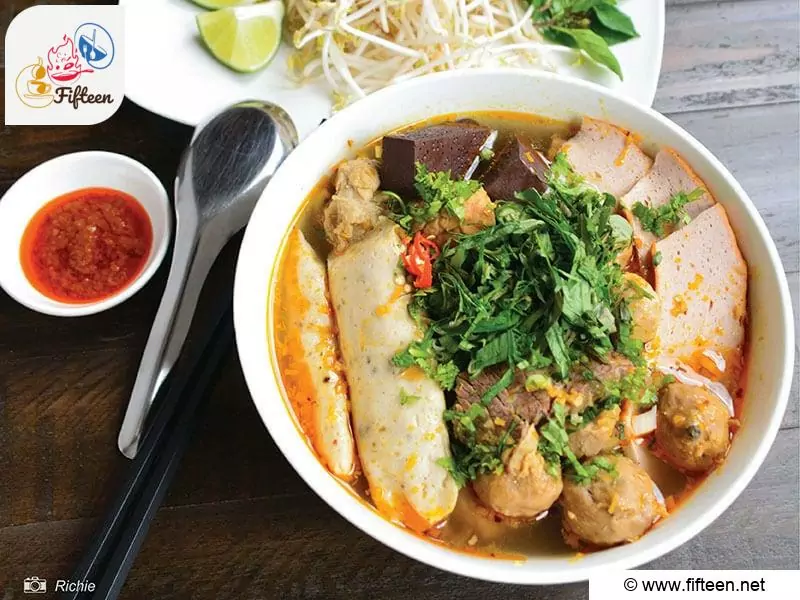
Bún Bò Huế (Vietnamese Spicy Beef Noodle Soup Recipe)
Equipment
- Pressure Cooker
- Pot
- Skillet
- Cutting Board
- Knife
- Slotted Spoon
Ingredients
- 400 grams rice noodles
- 400 grams beef brisket
- 1 kg knuckles
- 150 grams pig blood jelly
- 150 grams beef meatballs
- 200 grams Huế-style pork sausages
- 200 grams Vietnamese cinnamon pork pate
- 3 tablespoons fine shrimp paste
- 6 lemongrass stalks
- 0.25 pineapple
- Ginger
- Shallots
- Onions
- Lime juice
- Olive oil and cashew oil
- Spices: garlic, fresh chili, chili powder, soup powder, white pepper, anise, cardamom, and cinnamon
- Brown sugar and salt
- Herbs and vegetables: laksa leaves, scallion, saw leaves, basil, shredded banana blossom, bean sprouts, etc.
Instructions
- Add pineapple slices, whole onions, shallots, cinnamon, ginger, anise, and cardamon to the baking tray.
- Bake in the oven for 15 minutes.
- Clean the beef brisket, pork knuckles, and pig blood jelly by parboiling them in a mixture of hot water, salt, ginger, and scallion for 3 – 5 minutes with the lid off.
- Skim off the impurities that float to the top. Remove the meats and keep them somewhere cold.
- Finley chop 1 lemongrass stalk, 2 shallots, and 4 garlic cloves. Set them aside to make the sate sauce later.Crush the baked ginger with a meat mallet.
- To a pressure cooker, add the beef brisket, 1 liter of water, half the baked ingredients (but without cinnamon, cardamon, and anise), white pepper, and 3 lemongrass stalks. Set the pressure cooker on stew mode for 20 – 30 minutes.
- To a stock pot, add the pork knuckles, the rest of the baked ingredients, 3.5 liters of water, 3 lemongrass stalks, 1 teaspoon of salt, and one teaspoon of brown sugar. Cook on medium heat for 1 hour 30 minutes to 2 hours. Keep the lid off and occasionally skim off the foam to keep the broth clear.
- Pour one small cup of water into a saucepan and bring to a boil. Add shrimp paste and 2 teaspoons of brown sugar. Stir well. Cook until the mixture bubbles, turn off the heat and let it cool.
- Heat a skillet with olive oil. Saute chopped lemongrass, shallots, and garlic, along with chili powder and cashew oil. Stir constantly until the sauce releases a fragrant smell. Set aside.
- Get the beef brisket, pork knuckles, and other ingredients out of the pots. Set the meats aside to cool down and drain.
- Prepare the broth by pouring the beef stew water, the liquid part of the shrimp paste mixture, and most of the sate sauce into the pot with pork knuckle stew water. Give it a gentle stir.
- Cut the beef, cinnamon pork pate, and pork sausage into thin slices. Finely chop onions, scallion, coriander, laksa leaves, and fresh chiles. Set aside for toppings.
- Dice the pig blood jelly into bite-sized cubes.
- Send the pig blood jelly cubes and beef meatballs into the broth and cook over medium heat for 5 minutes.
- Add brown salt and brown sugar to taste.
- Parboil the noodles in hot water mixed with a little cooking oil (to keep their strands separate) for the best experience.
- In a bowl, arrange slices of cinnamon pork pate, pork sausage, beef, and a pork knuckle on the noodles. Pour the broth, along with the pig blood jelly cubes and beef meatballs, into the bowl.Decorate the dish with chopped aromatics. Serve with fresh greens and sate sauce (if any).
Video
Notes
- Don’t add all the sate sauce to the broth: save some to serve with the finished dish.
- Good broth should be clear and free of impurities/ foam.


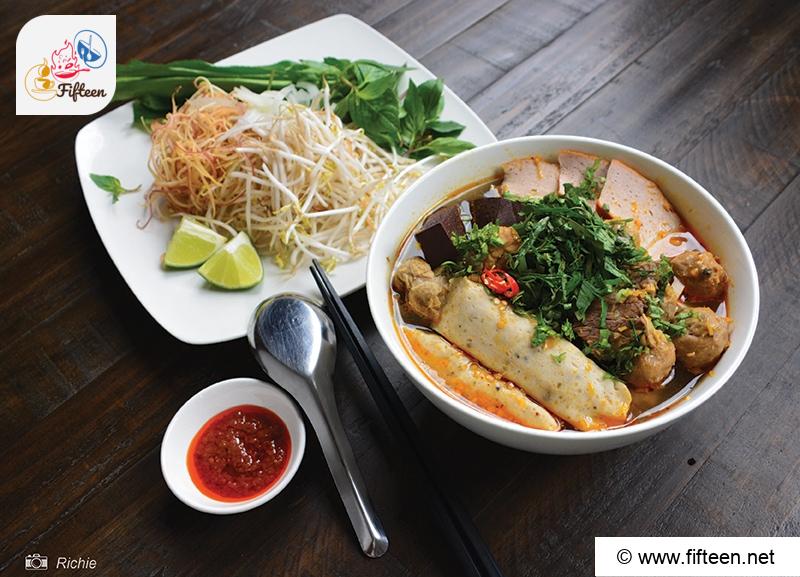
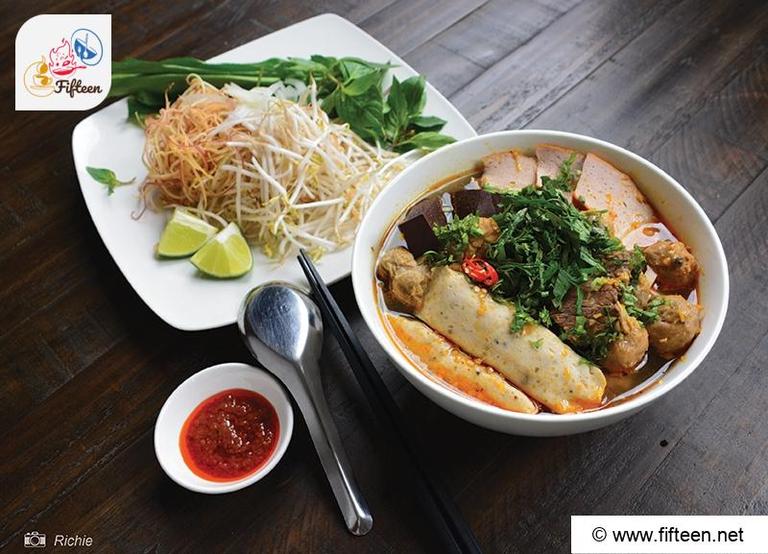
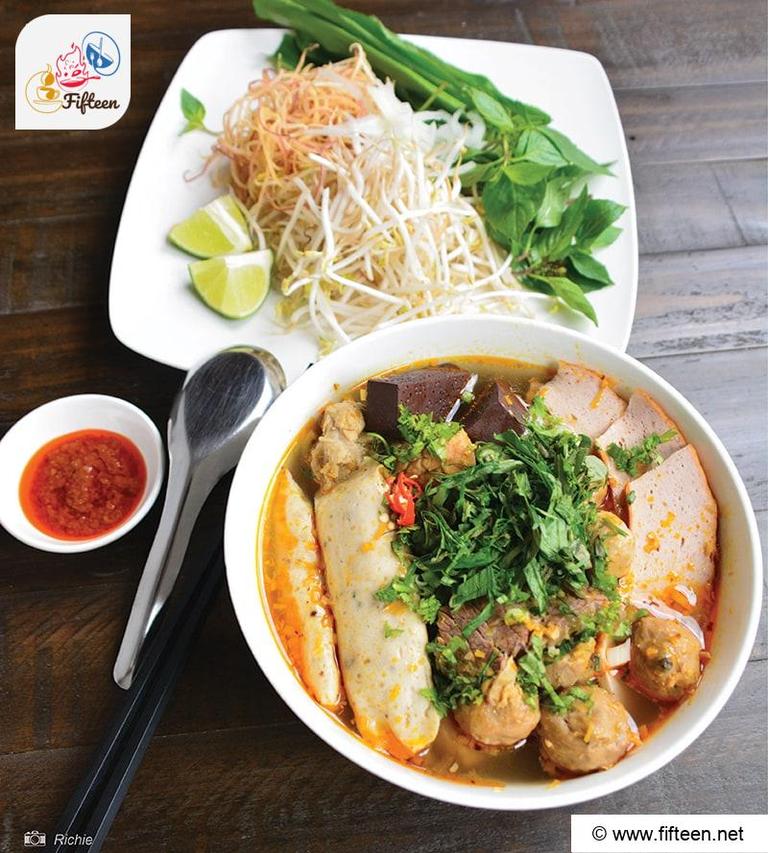
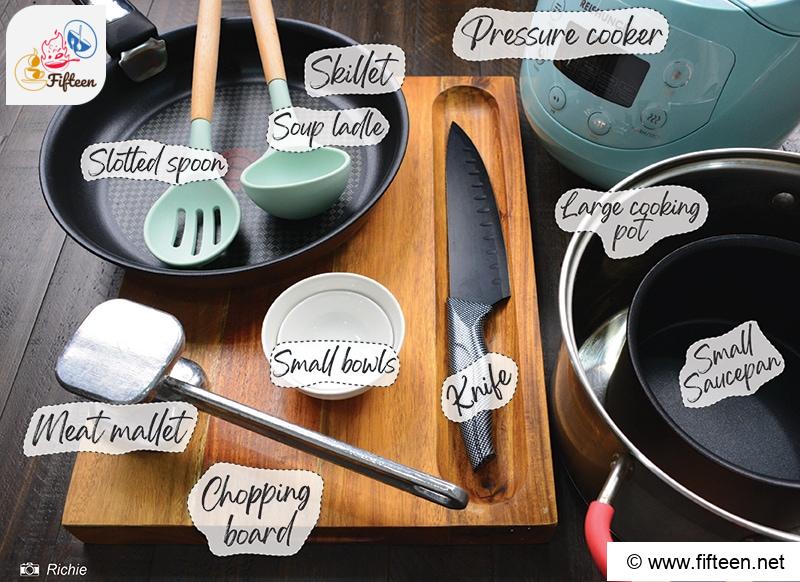
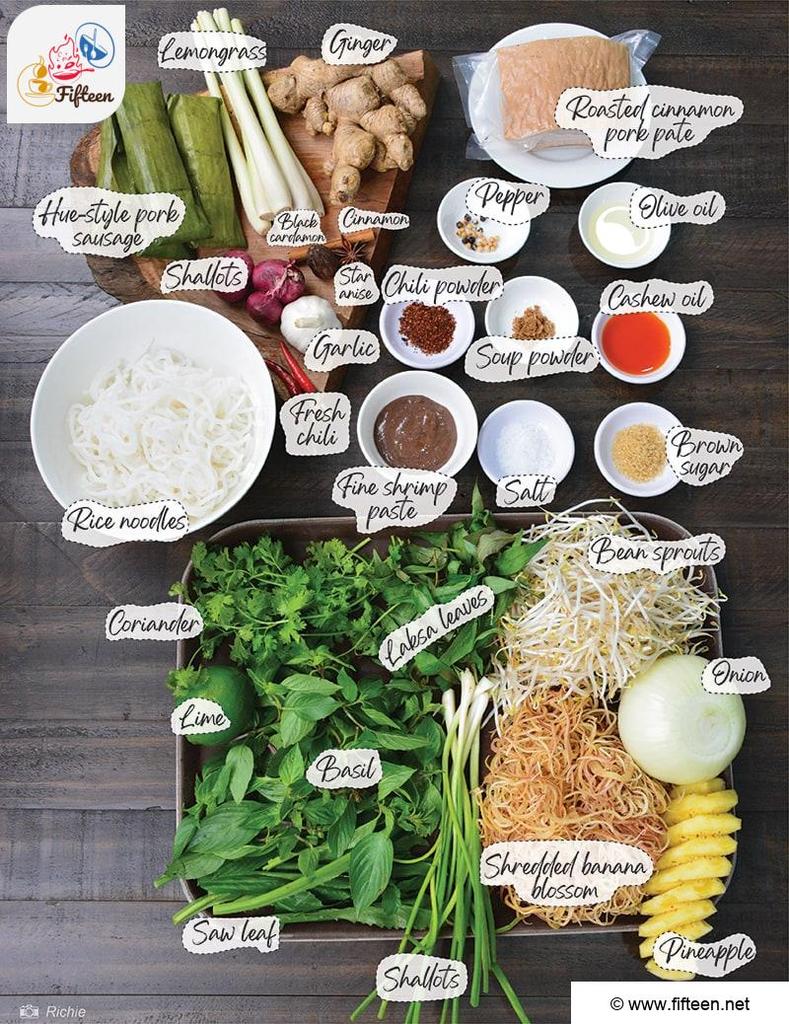
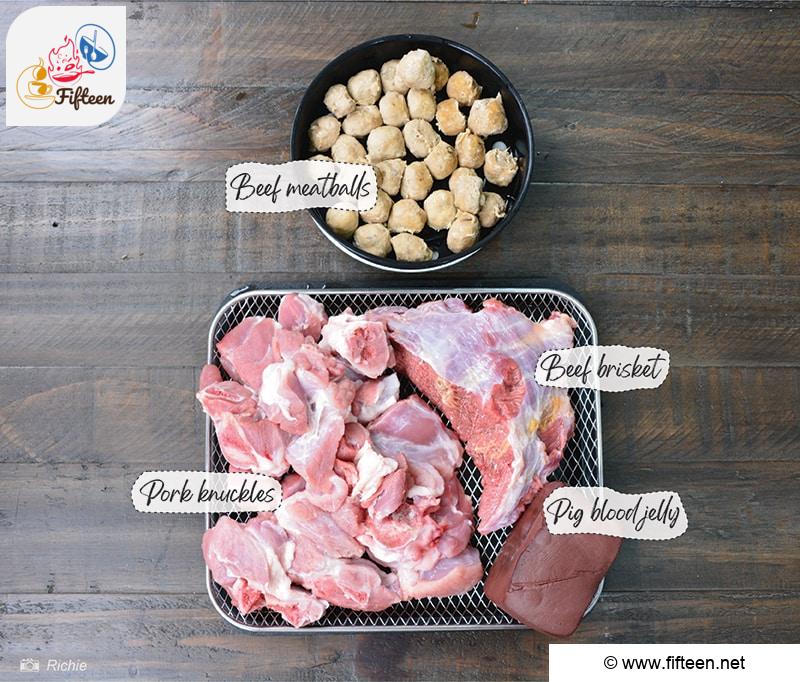
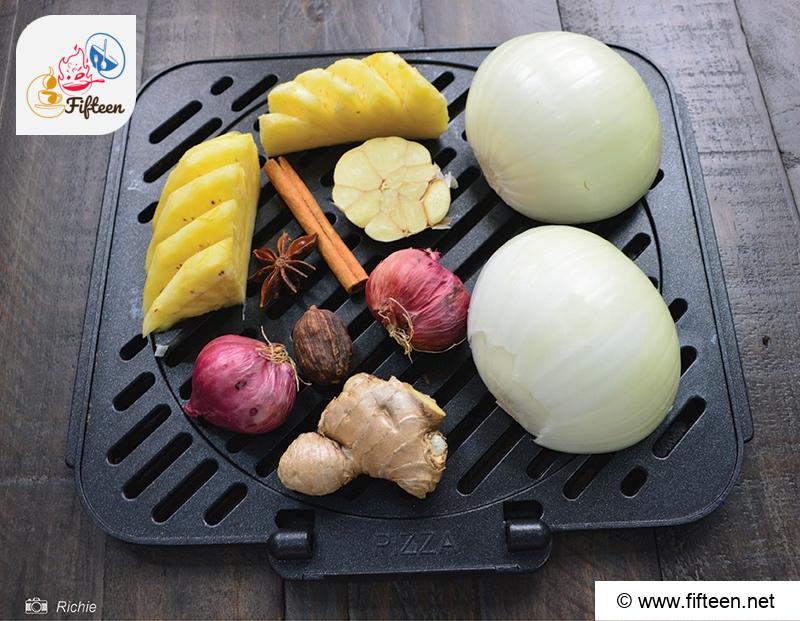
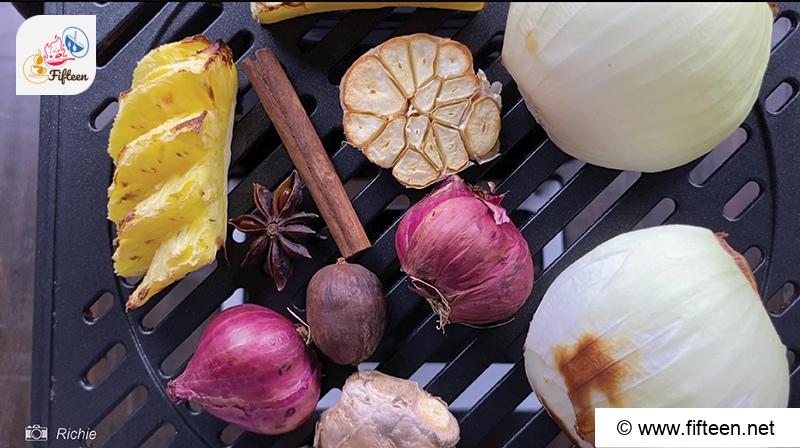
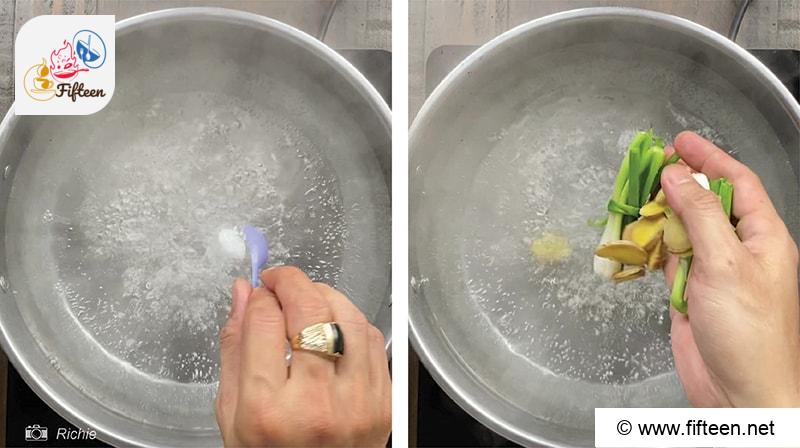
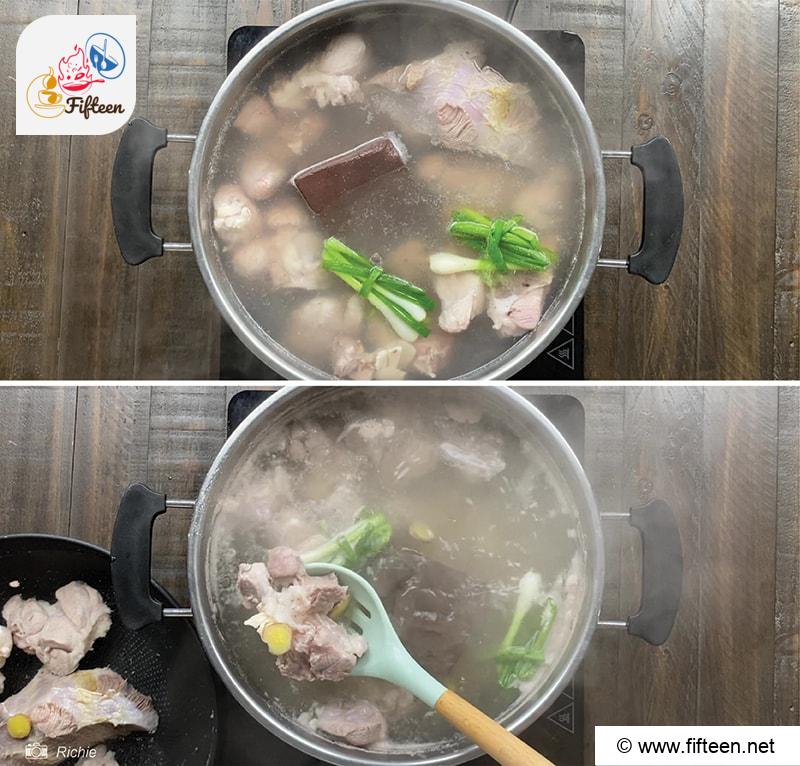
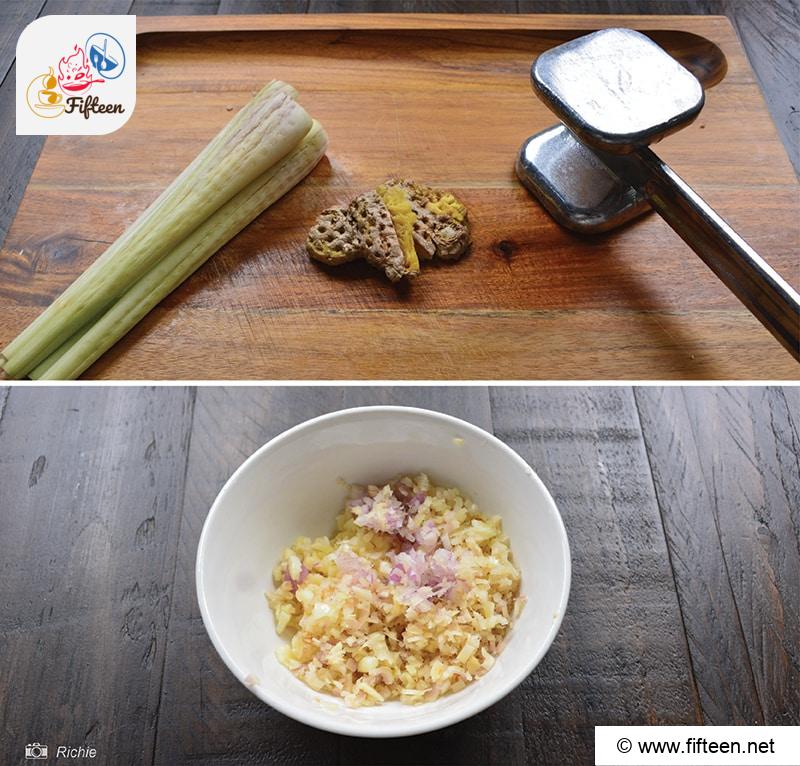
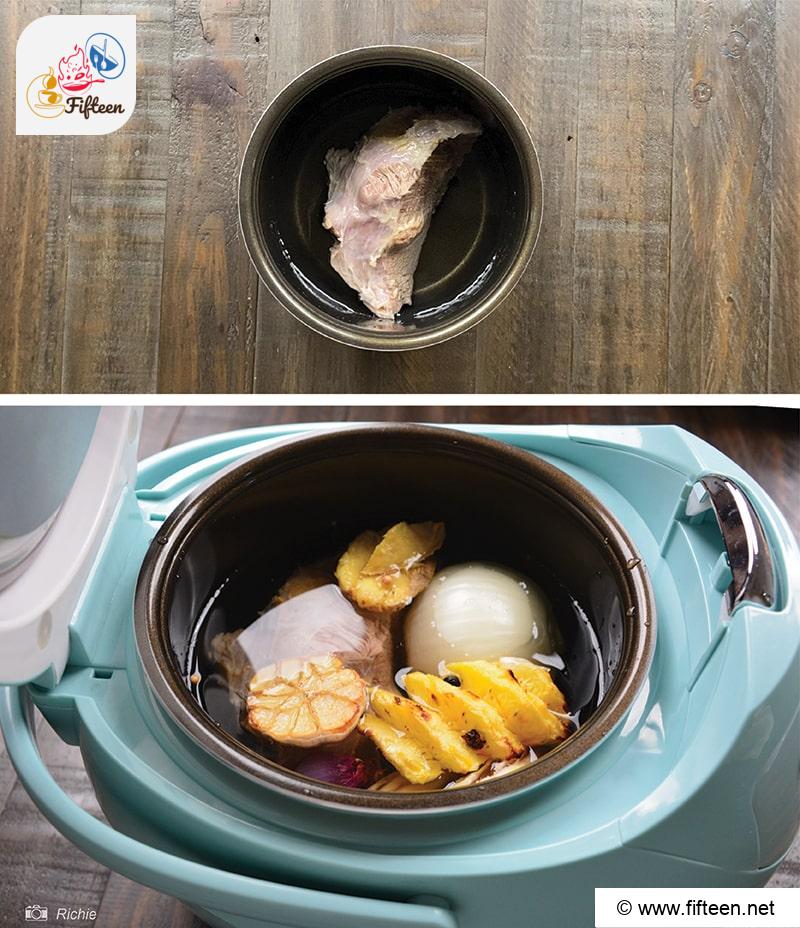
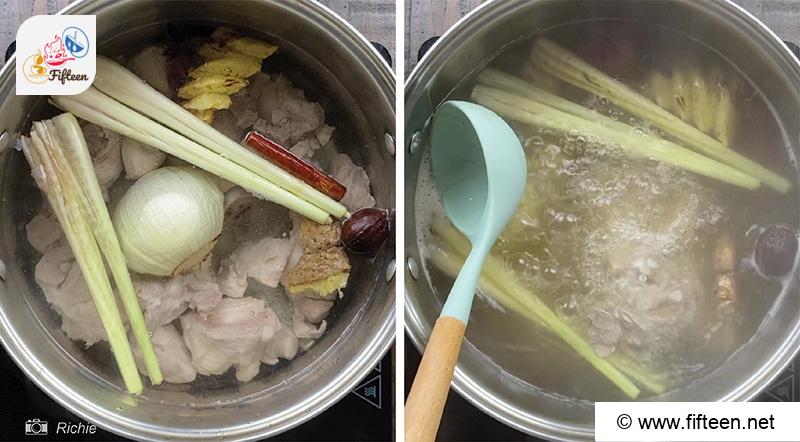
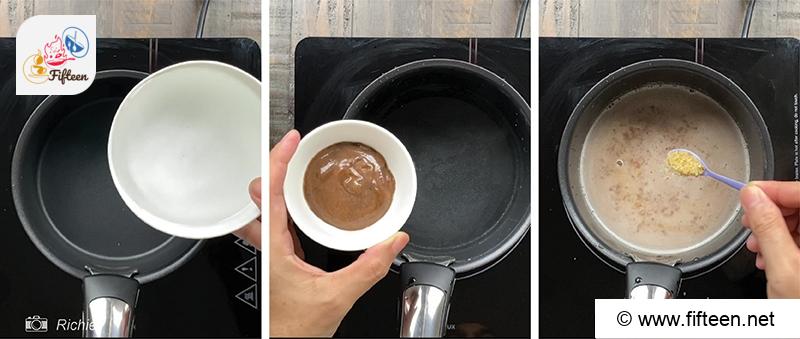
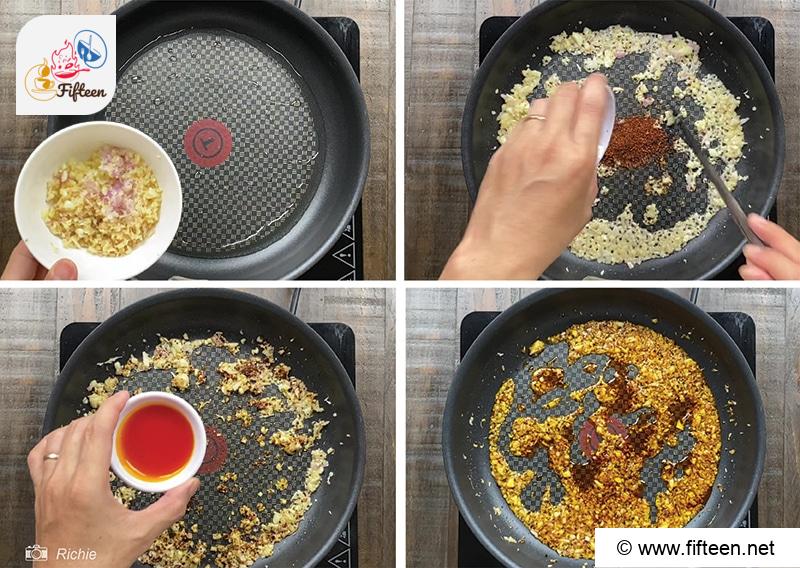
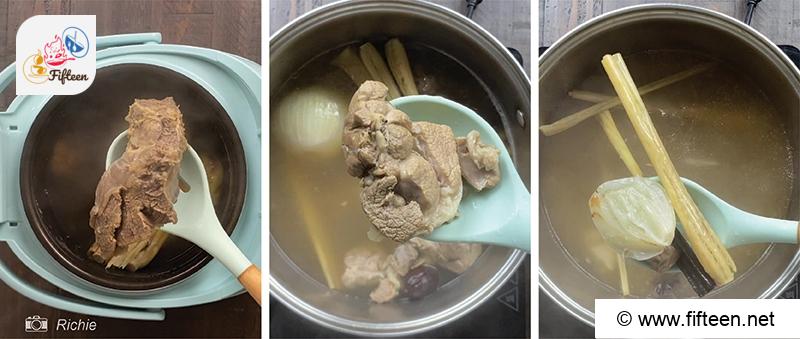
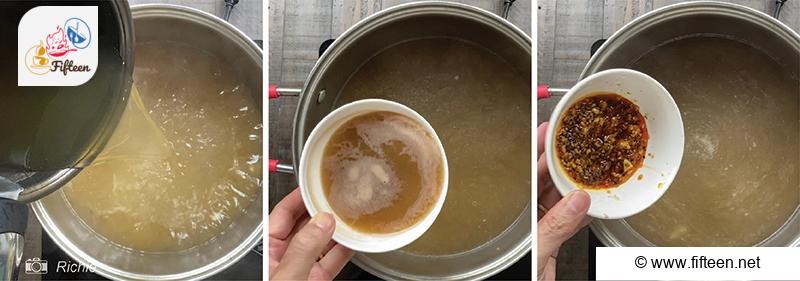
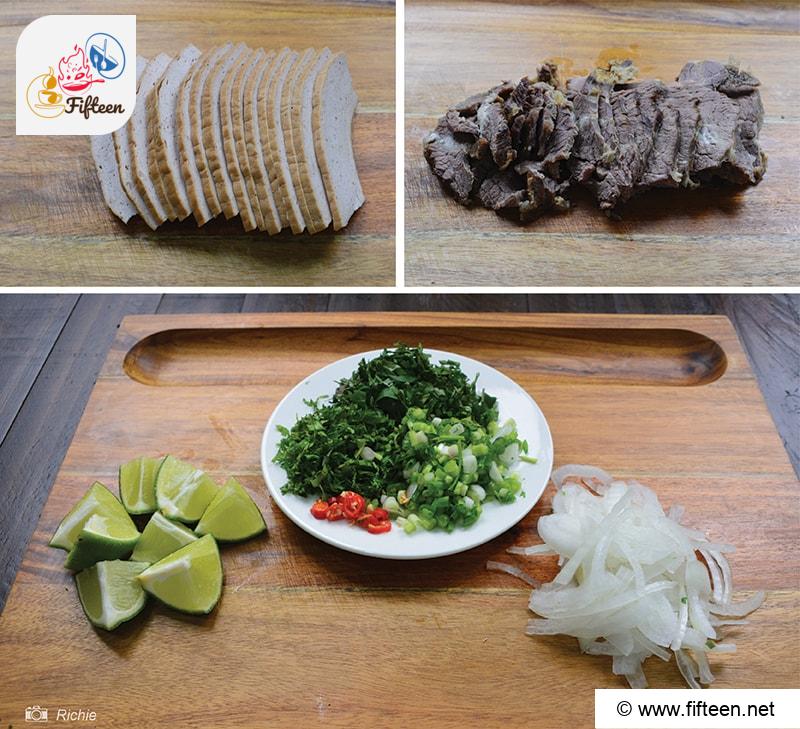
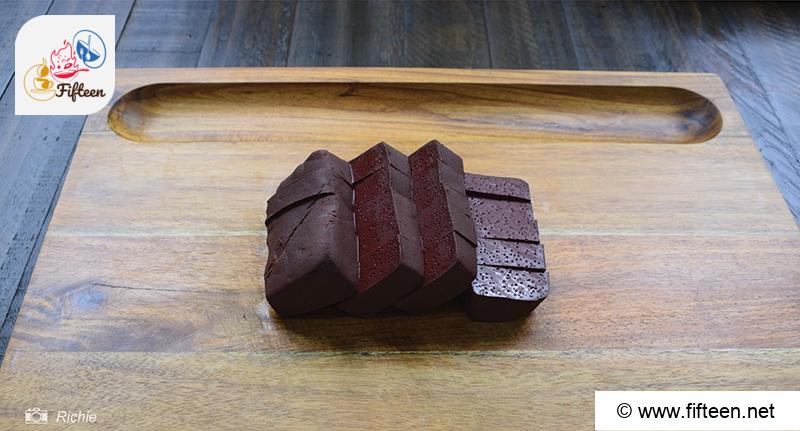
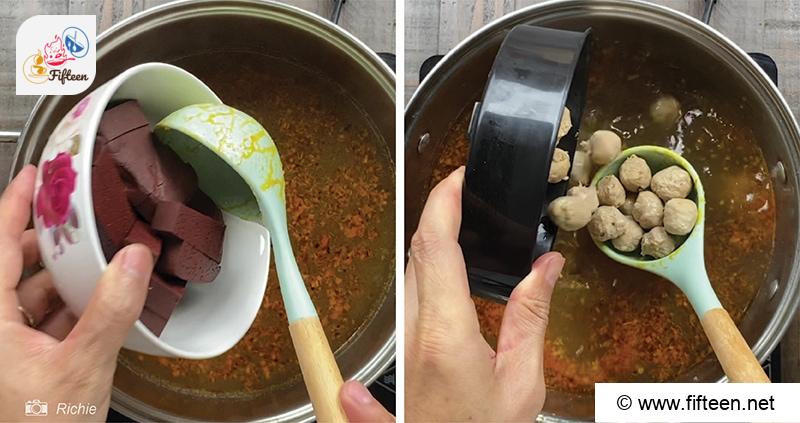
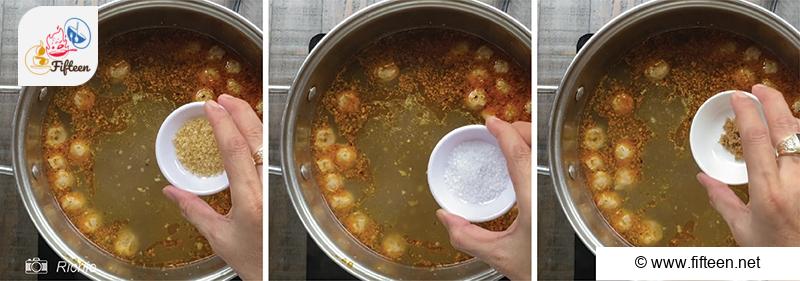




Richie
Content Writer
Expertise
Home Cooking, Meal Planning, Food Styling, Food Photography, Cooking-video Maker, Beverage Evaluation Expert
Education
Saigon Culinary Arts Centre, Ho Chi Minh City, Vietnam
Vietnam Australia Vocational School (VAAC), Hanoi, Vietnam
Richie, based in Ho Chi Minh City, Vietnam, is a dynamic Content Writer with a talent for capturing the essence of culinary art.
Richie specializes in creating visually appealing and tasty content, offering a new angle on Vietnamese and other culinary traditions. With a background in graphic design and a love for food styling and photography, he expertly combines beauty with food narratives, encouraging his audience to discover the culinary world through his imaginative perspective.